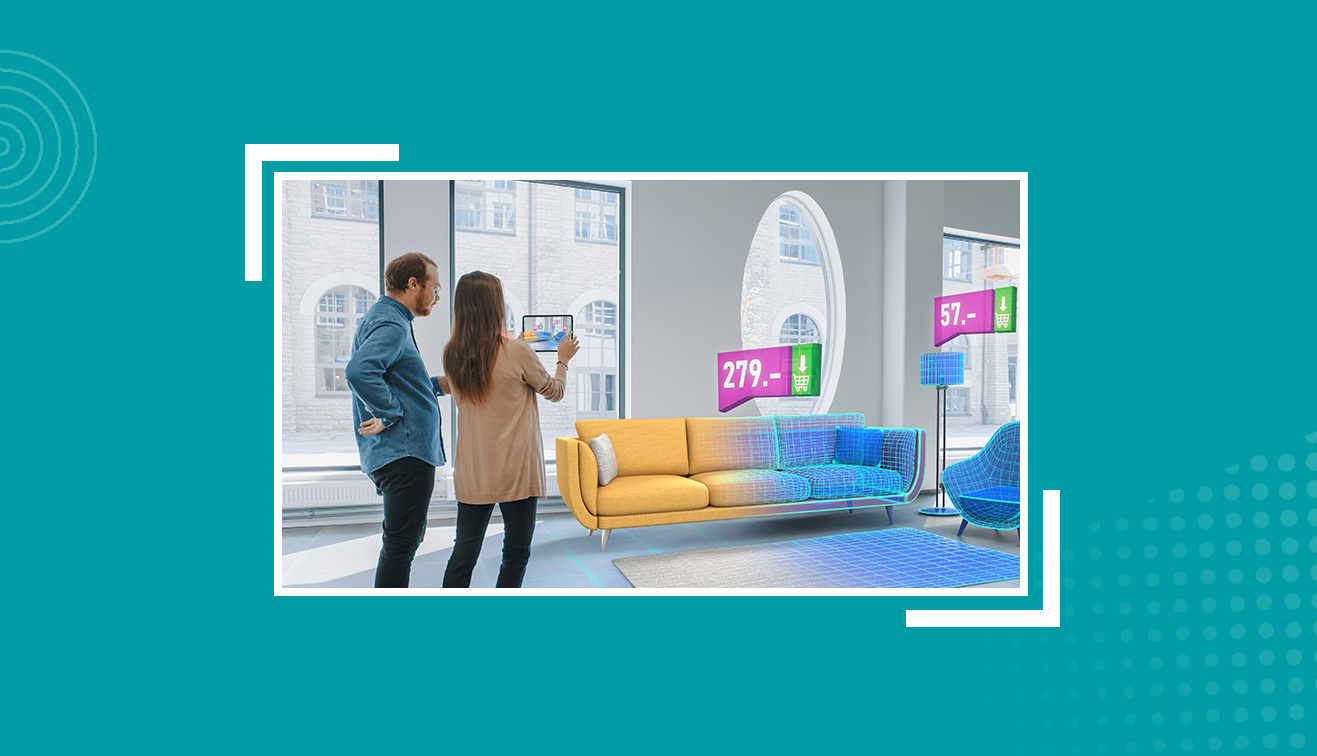Ever since the Internet of Things (IoT) came into existence, it has revolutionised many industries, including e-commerce. In simple words, IoT refers to the interconnected network of devices, sensors, and software that enables devices to communicate and exchange data with one another over the Internet. It drastically changed the way we shop today by introducing concepts like smart check-out, inventory management and more. Let’s, explore a bit more the role of IoT in e-commerce and its impact on revolutionising shopping.
Understanding of use cases:
The IoT devices are connected to the internet and can collect and transmit data in real time. E-commerce businesses today use IoT devices to track inventory levels, monitor the condition of products during shipping, and even gather data about customer behaviour. There’s a lot of potential in this tech!
- For example, an e-commerce company that sells perishable goods such as fresh produce or meat could use IoT sensors to monitor the temperature and humidity levels during shipping. This data can be transmitted in real-time to the company's database, where they can analyse it to ensure that the products are being stored and transported under the correct conditions.
- Another use case for IoT in e-commerce is in the tracking of customer behaviour to offer maximum personalisation. For instance, a retail store could use RFID tags to track which products customers are interacting with and how long they spend in different areas of the store. This information can then be used to personalize the shopping experience for each customer, such as by sending them targeted promotions or recommendations based on their past behaviour. Retailers are empowered to collect data on the usage pattern, preferences and behaviour of the customers to provide them with the best needed.
Here are some more ways in which IoT contributes to eCommerce:
The benefits of IoT are not limited to only a few use cases. There is so much more that IoT can do! Here are some more examples:
Smart Homes
The rise of smart homes allows customers to order products using voice commands. Devices such as Amazon's Alexa and Google Home are equipped with voice-activated assistants that allow customers to order products directly from e-commerce stores.
Connected Devices
IoT sensors can be embedded in products to provide customers with real-time updates on their usage and suggest replenishment. For example, a smart refrigerator can notify a customer when a particular product is running low and offer to reorder it from the online store.
Location-Based Services
Retailers can use IoT technology to offer location-based services to customers. Using sensors and beacons, retailers can track a customer's location within a store and offer personalized recommendations and promotions based on their preferences.
Inventory Management
Retailers can use IoT technology to track inventory levels and reorder products automatically when stock runs low. This helps to avoid stockouts and ensures that customers can always find what they are looking for.
Logistics and Supply Chain Management
IoT can also improve the logistics and supply chain management of e-commerce businesses. Sensors can track the location and condition of products in transit, ensuring that they arrive at their destination on time and in good condition. Additionally, IoT can help optimize delivery routes, reduce shipping costs, and improve delivery times.
Delivery and Logistics
IoT sensors can be used to track packages in real time, providing customers with updates on the status of their deliveries. This can help to reduce the number of missed deliveries and provide customers with greater convenience.
Payments
IoT devices such as smartwatches and fitness trackers can be used to make payments directly from the device. This can help to streamline the payment process and make it more convenient for customers.
Predictive Maintenance
IoT sensors can be used to monitor the performance of products and predict when maintenance or repairs will be needed. This can help to reduce downtime and improve customer satisfaction.
Analytics
IoT technology can provide retailers with a wealth of data on customer behaviour, usage patterns, and preferences. This data can be used to make informed decisions on product development, marketing, and sales strategies.
Customer Support
IoT devices can be used to provide customers with real-time support and assistance. For example, a chatbot integrated with IoT sensors can help customers troubleshoot issues with a product.
Energy Efficiency
IoT technology can help retailers to reduce their energy consumption and carbon footprint by optimizing the use of energy-intensive devices such as HVAC systems and lighting.
Product Development
IoT technology can be used to collect data on how customers use products, which can inform product development decisions. For example, a smart coffee machine can collect data on the brewing preferences of customers, which can inform the development of new coffee products.
Security
IoT technology can be used to enhance the security of e-commerce transactions by providing additional authentication methods such as biometric authentication.
Conclusion:
IoT technology is transforming the way e-commerce is conducted, offering numerous benefits to both retailers and customers. As IoT technology continues to advance, we can expect to see even more innovative applications of this technology in the world of e-commerce soon. IoT technology can help retailers to scale their e-commerce operations more easily by automating tasks such as inventory management, payment processing, and customer support.
It is helping to create a more seamless and personalized e-commerce experience for customers, while also providing retailers with greater efficiency and insights into customer behaviour. More convenience to customers and scalability to retailers; IoT has certainly sparked the change with its advent.








.png?h=250&fm=webp)
.png?h=250&fm=webp)
.png?h=250&fm=webp)



.png?h=250&fm=webp)
.png?h=250&fm=webp)
.png?h=250&fm=webp)


.png?h=250&fm=webp)



.png?h=250&fm=webp)
















.png?h=250&fm=webp)

.png?h=250&fm=webp)
.png?h=250&fm=webp)



































































































































.png?h=250&fm=webp)


.jpg?h=250&fm=webp)





 copy.png?h=250&fm=webp)























_ Why do you need one.png?h=250&fm=webp)


























































.jpg?h=250&fm=webp)

.png?h=250&fm=webp)



.png?h=250&fm=webp)

.jpg?h=250&fm=webp)




.png?h=250&fm=webp)









.jpg?h=250&fm=webp)
